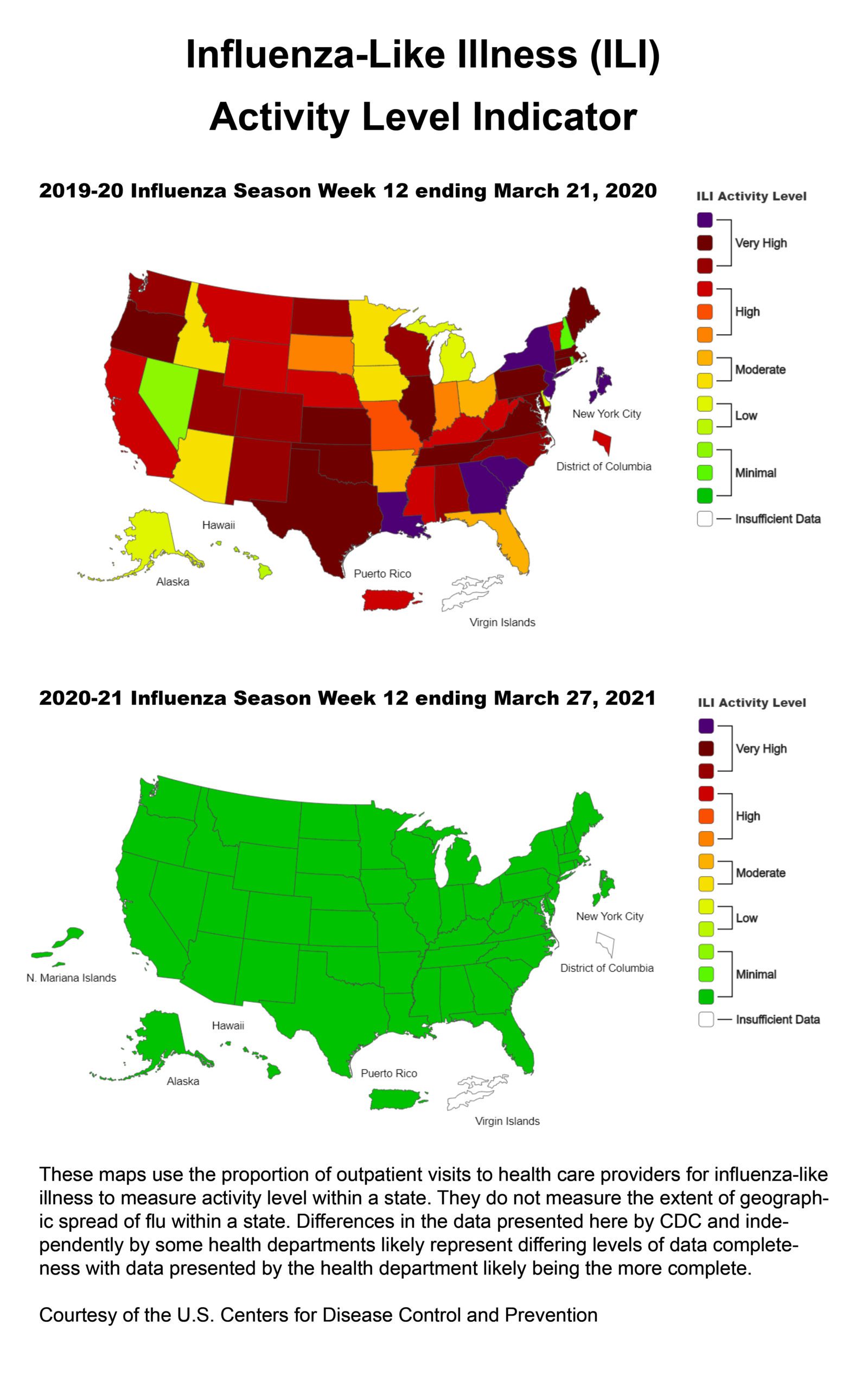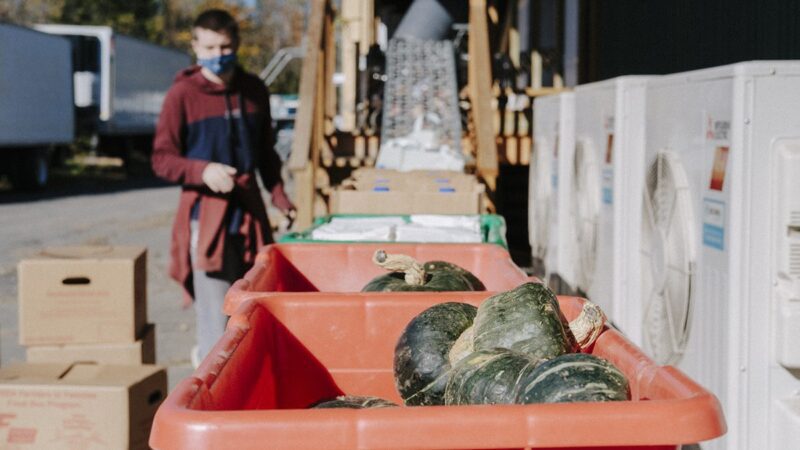Demand for food assistance this winter remained high during the COVID-19 pandemic, but organizers say federal programs prevented hunger from increasing even more. The economic fallout from the pandemic, leading to hunger, continues to disproportionately hit the most vulnerable.
And requests for heating assistance are trending slightly lower than the same time last year, although officials say this could be due to agencies closing to the public during the pandemic, limited access to technology and challenges with the mail system.
The impact of COVID-19 on food insecurity this winter was “mixed,” said Kristen Miale, president of Good Shepherd Food Bank, which coordinates distribution with more than 500 food pantries, soup kitchens, shelters and schools across the state. Although demand remained high, there wasn’t a widespread increase in hunger during the colder months.
During the 12 months leading to the pandemic, Good Shepherd distributed 25.8 million meals, Miale said this week. Between March 2020 and February 2021, the food bank distributed 36 million meals — a 40 percent increase.
Miale told The Maine Monitor in November that the need for food assistance remained 25 percent higher than normal during the summer, which would be a “staggering” increase in a normal year.
RELATED: Preparing for a cold, hungry winter
Federal stimulus packages, food stamp expansions and unemployment insurance extensions prevented what could have been an even larger impact, Miale said.
“Those interventions by the government were meaningful and really prevented the worst from happening, which is wonderful,” Miale said. “However, the impact of COVID-19 disproportionately affected our most marginalized communities, especially Mainers of color.”
Mainers of color were more likely to get COVID-19 and are likely to work in industries hit hardest by shutdowns. And Miale said many new Mainers had unequal access to government programs or were hesitant to take advantage of the programs because of rhetoric from the Trump administration, which said accepting assistance could threaten their citizenship eligibility.
She added that the demand for food assistance has fluctuated with national news. A spike in need at the start of the pandemic came down during the summer as people started feeling the benefits of the CARES Act. Then, as cases spiked in the fall, so did the need for food assistance. In the first months of this year, with another relief package and the vaccine rollout, Miale said anxiety started to decline, as did demand at food banks.
Good Shepherd is “cautiously hopeful,” Miale said. They’re focused now on targeted outreach to communities that have been hit the hardest. She expects the recovery will take longer than the pandemic and will be unequal. A February survey of partner food banks found that about 13 percent of people were getting food assistance for the first time. That’s high, but it also means the vast majority were people who were hungry before the pandemic, she said.
“Everyone keeps saying they want to go back to normal. Well, normal really wasn’t so great for a lot of people even prior to COVID-19,” Miale said.
Heat insecurity, on the other hand, is trending close to last year, despite concerns there would be a spike in demand for assistance during the winter.
RELATED: Running on empty
Since August, 42,073 Mainers have applied for heating assistance through MaineHousing, the agency that administers that program. During the same period last year, 42,784 Mainers had applied, spokeswoman Cara Courchesne said this week. There haven’t been any notable surges or drops in demand for heating assistance throughout the pandemic.
“Overall the winter was better than anticipated in terms of what we could provide for people in need,” Courchesne told The Maine Monitor. “So far we’ve received the resources necessary (through federal aid and stimulus packages) to respond to a crisis of unknown duration and impact.”
The housing agency now is focused on helping people pay their rent and utilities, and making sure people who are homeless have a warm and safe place to stay, Courchesne said.
Overdoses in February drop from January, remain higher than 2020 average
In February, 45 Mainers died from confirmed and suspected drug overdoses, according to a report released this week by the state Attorney General’s Office. This represents a decrease from 54 fatal overdoses the previous month but remains slightly higher than the 2020 monthly average of 42.
About two-thirds of the deaths in January and February were men and 90 percent were people between the ages of 18 and 59, according to the report. There were no deaths under age 18.
The most frequent cause of death was non-pharmaceutical fentanyl. The “overwhelming majority” of overdoses in January and February were accidental, the report stated.
Marcella Sorg of the University of Maine Margaret Chase Smith Policy Center compiled the report with funding from the Attorney General and Office of Behavioral Health.
“February’s numbers are an important reminder of the opioid crisis’ continued grip on our state and the country,” Attorney General Aaron Frey said in a press release. “I am hopeful that current efforts … will continue to shine a light on the need for state and local governments to work proactively with community members and organizations to ensure that people are connected with the resources they need to treat substance use disorder.”
More information is available at mainedrugdata.org.
Flu and Lyme disease cases plunge during pandemic
Flu cases in Maine plunged this season compared to the same time last year. As of March 27, there have been 153 positive cases, four hospitalizations and no deaths, according to the latest data from the Maine Center for Disease Control and Prevention.
 This time last year, Maine had recorded 10,000 flu cases, 494 related hospitalizations and 36 deaths.
This time last year, Maine had recorded 10,000 flu cases, 494 related hospitalizations and 36 deaths.
Experts attributed this decline to COVID-19 safety measures such as masks, social distancing and hand washing, less interstate travel and some overlap with COVID-19 symptoms.
Nationally, the cumulative hospitalization rate was 0.7 per 100,000 people, according to the U.S. CDC — a fifth of the 2011-12 rate. There’s been one pediatric death associated with the flu in the U.S. this season.
A map of influenza cases last year depicted large swaths of the country in deep reds and purples indicating “very high” activity levels. This week the map is entirely bright green, indicating “minimal” activity levels.
“Flu activity is unusually low at this time but may increase in the coming months,” according to the U.S. CDC.
Lyme cases also have plummeted, decreasing 50 percent from 2,167 cases in 2019 to 1,115 last year, the Portland Press Herald reported on March 23. Experts said this was likely due to a dry summer, which ticks don’t like, and symptoms possibly getting confused with COVID-19.
Dr. Nirav Shah, director of the Maine CDC, on March 23 laid out a number of possible reasons cases of Lyme disease decreased last year. There’s national evidence that people have mostly stayed home during social distancing measures. Some may have been reluctant to seek health care during the pandemic and others may have assumed they had a mild case of COVID-19 and self-isolated. And the climate last year may have impacted tick activity, he said.
Shah warned that just because last year was a “favorable year” for Lyme disease doesn’t guarantee the same thing will happen again. He encouraged people to take precautions outside such as wearing insect repellent, tucking pants into socks, avoiding exposed skin and checking for ticks after hiking.
“Either way, both the reduction in Lyme disease as well as the reduction in influenza, they’re both good news in a year where it’s been tough to find good news,” he said.
In case you missed it
COVID-19 testing in the U.S. dropped by a third in two months, according to reporting from Stateline, an initiative of The Pew Charitable Trusts. Experts told the nonprofit that the drop likely reflects declining cases and a sense of “relief that leaves people less inclined to get tested.” …
A website launched by the Maine Department of Health and Human Services last week lets people pre-register for a COVID-19 vaccine, including those who aren’t yet eligible. Anyone who signs up will receive an access code when appointments are available so they can schedule a time.
The agency warned that not all clinics use the system. A full list of vaccine sites is available on Maine’s COVID-19 vaccine website. Those without internet access also can call the Community Vaccination Line at 1-888-445-4111.




